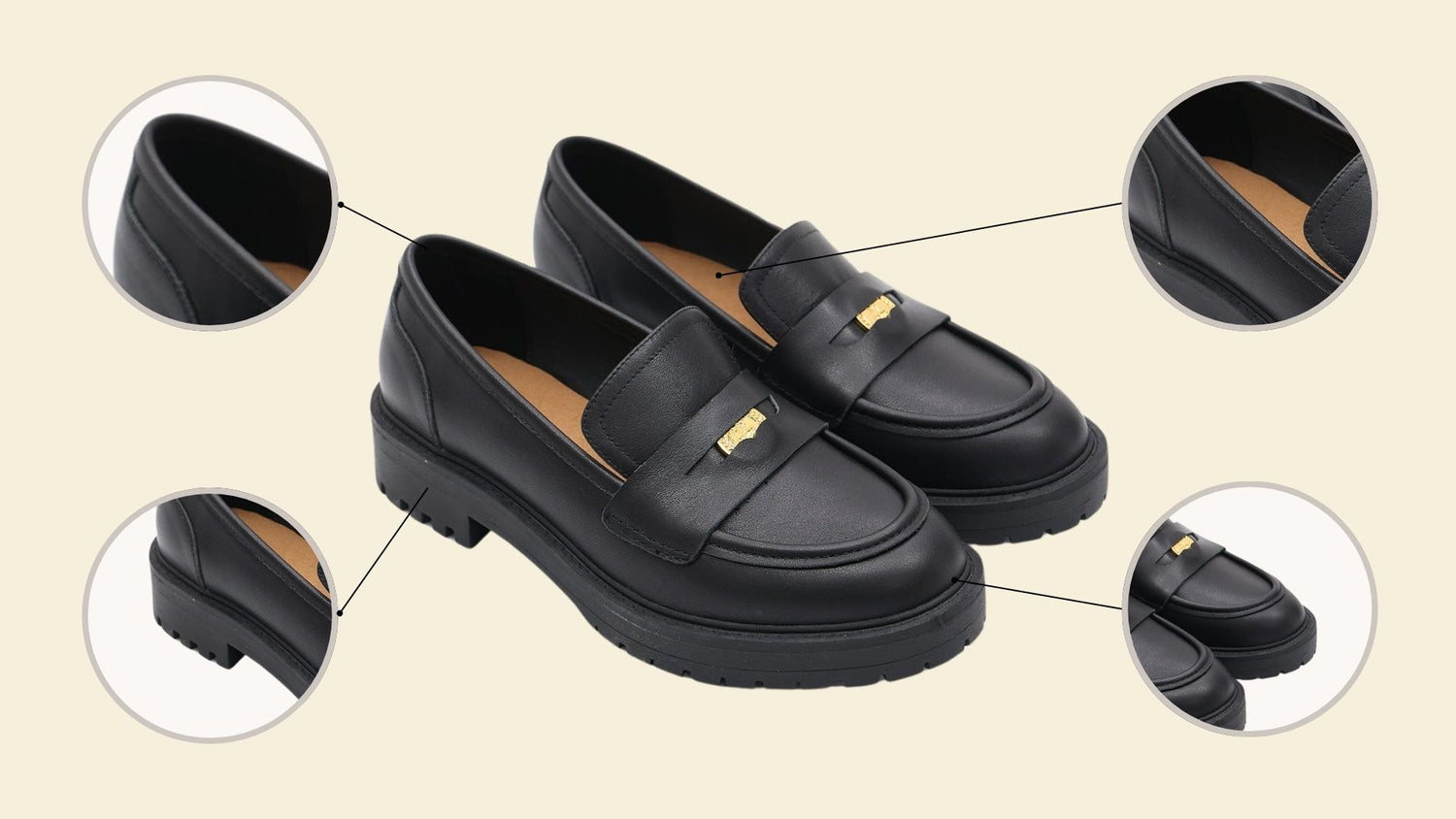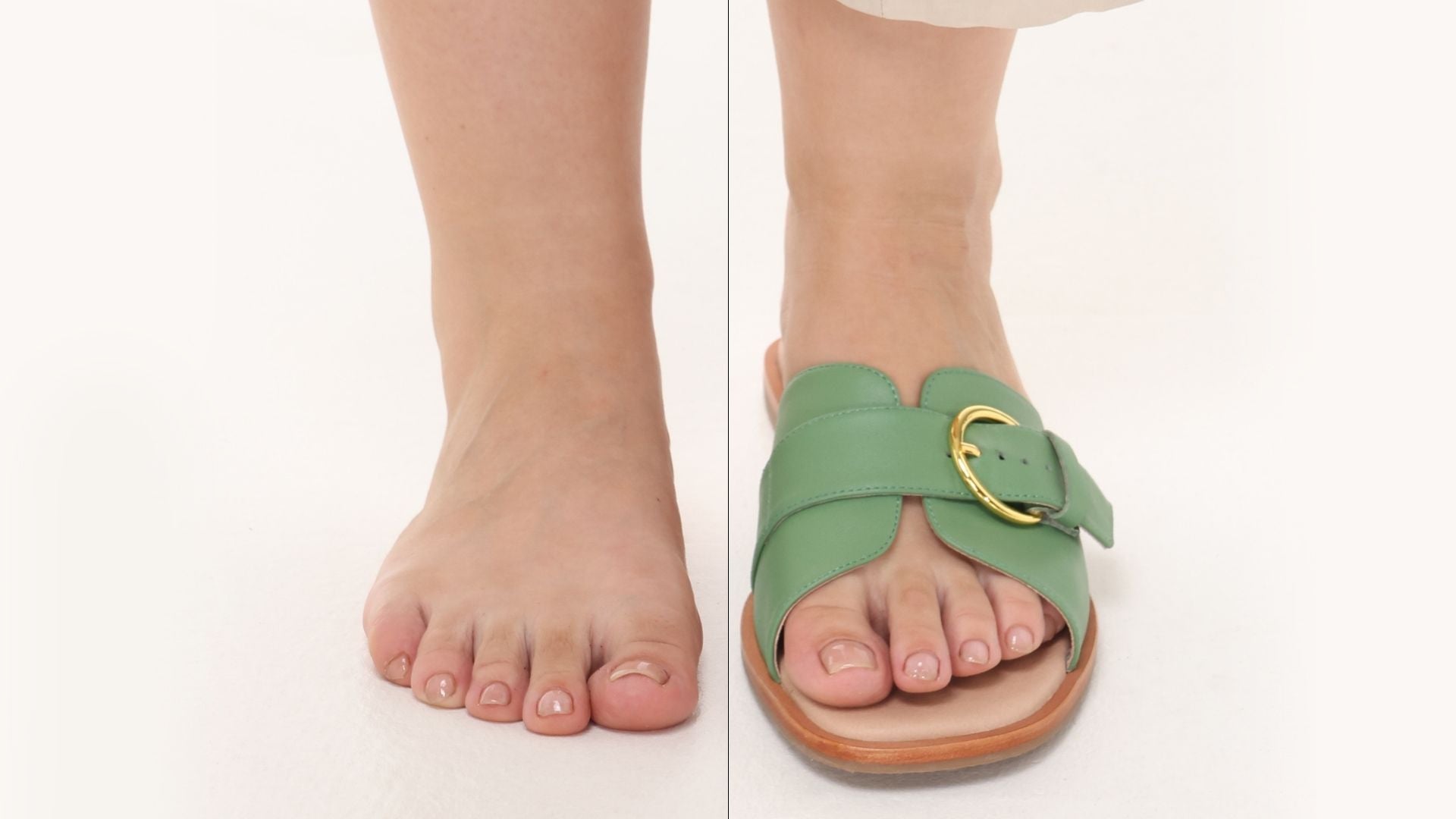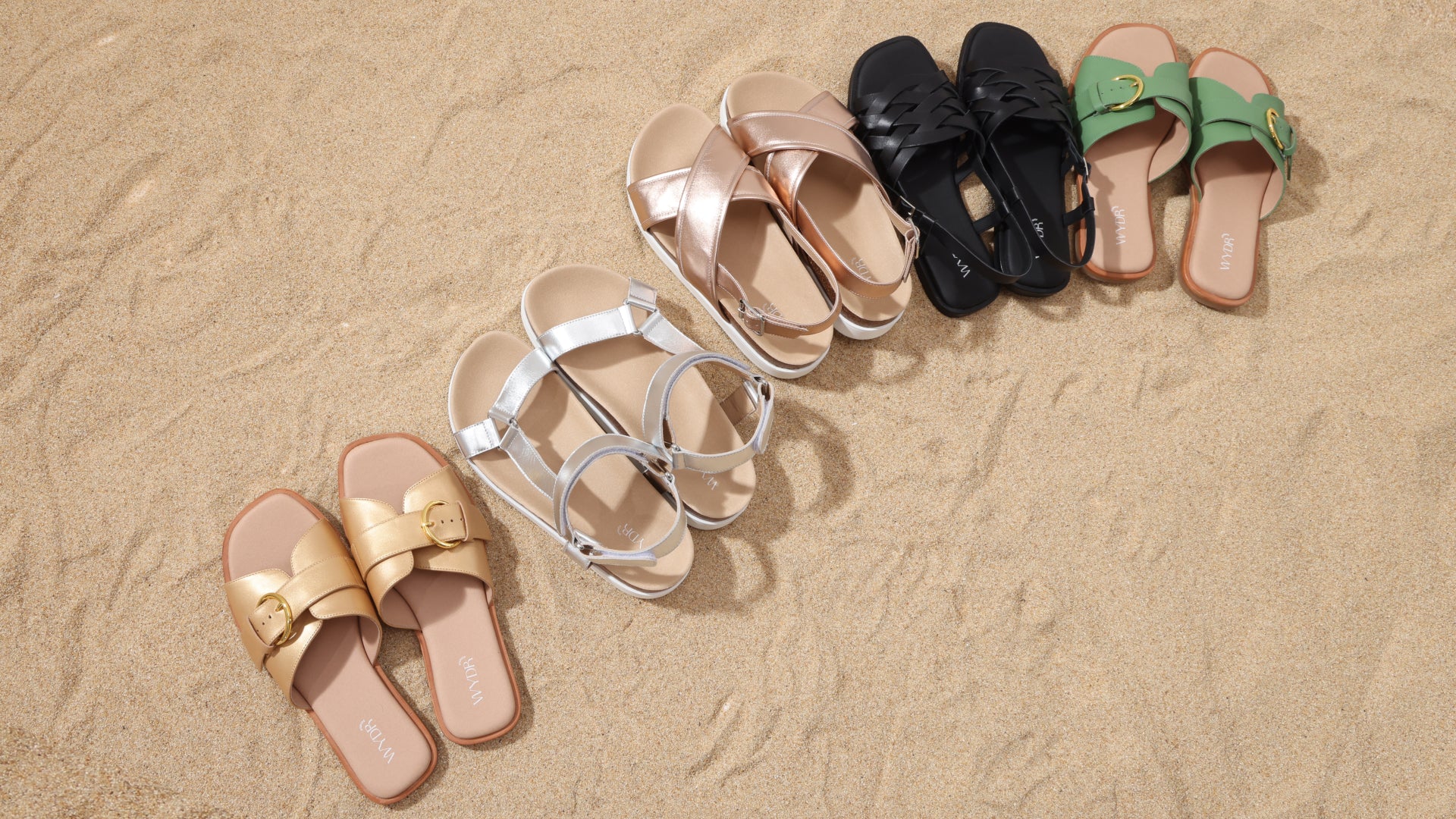Choosing the right shoes isn't as straightforward as you might think. It's not only about your shoe size, but also how well they fit the unique shape of your feet. In this guide, we'll break down the main differences between wide and regular shoes, focusing on width, toe box shape, overall fit, arch support and strap flexibility . Stick with us to find out how these factors affect your comfort and why they matter when picking out your next pair.
What's the Difference Between Regular and Wide Shoe Widths?
When it comes to wide shoes, the name of the game is space. They're specifically made broader across the board, and you'll really notice the difference in the toe box and forefoot area. Looking for that extra room will find it with a "2E" or "WW" width. It's not just about going up a size; it's about giving your feet the width they need where they need it most.
Regular shoes follow standard width measurements-no fancy letters attached. They're designed to fit the average foot, which is great if that's your fit, but can be a squeeze for anyone with wider feet or certain conditions like flat feet or swollen arches. If you've ever felt like your shoes are giving your feet a tight squeeze, it might be time to consider that 'wide' label.
Comparing Toe Box Width: Regular vs. Wide Shoes

With wide shoes, the toe box is literally just wider. This additional width can be a relief for anyone whose toes feel squished or constricted in regular shoes. There's enough space to accommodate wider feet naturally, which is particularly beneficial for those with foot conditions that demand extra room to prevent further issues or discomfort.
In contrast, regular shoes often come with a standard, narrower toe box. They're built according to an average foot width, which might not suit people with broader feet. If you regularly experience tightness around your toes in standard shoes, it could be a sign that a pair of wide toe box shoes would be more suitable and comfortable for your feet.
How Does Fit Vary Between Regular and Wide Shoes?
Wide shoes don't just add extra room in the toe area; they offer a more generous fit throughout. This includes key areas like the midfoot and instep, which can really affect how comfortable you feel throughout the day. For those who experience their feet swelling by evening or after long periods of standing, wide shoes can provide that necessary additional space to accommodate these changes without feeling restrictive.
Regular shoes are constructed with a standard fit in mind, which tends to be snugger, especially around the midfoot and instep. While this may suffice for many, for those with wider feet or specific comfort needs, this snugness can translate into discomfort. It can lead to issues such as blisters, calluses, and even circulatory problems if the tightness impedes natural foot expansion during the day. If you find regular shoes uncomfortably tight on a regular basis, it might be an indication that a wider shoe could improve your overall foot comfort and health.
How Does Arch Support Vary Between Wide and Regular Shoes?

In wide shoes, the arch support is thoughtfully placed to suit a broader foot structure. This ensures that the arch of the foot is properly supported where it naturally falls, which improves alignment and helps with weight distribution as you walk. It's a detail that can significantly enhance comfort for those with wider feet, making sure that support is provided right where it's needed.
Regular shoes, on the other hand, have arch supports designed based on an average foot width. While this works for many, if your foot is wider, the arch support might not line up correctly with your arch, potentially leading to discomfort or even pain. Missing the mark on arch support can cause issues over time, as it's crucial for maintaining proper foot health and comfort during movement. If you frequently experience arch pain or discomfort, checking whether your shoes are appropriately supporting your arch width might be worthwhile.
Wide vs. Regular Shoes: A Look at Support and Cushioning Differences
Wide shoes often feature specially designed insoles that provide targeted support to areas where wider feet might experience more pressure or fatigue. These insoles can be thicker with extra padding in the forefoot or arch area to accommodate the spread of a wider foot. The outsoles may also have a broader base, not only to align with the wider upper but to ensure a stable foundation. This combination can offer improved shock absorption, reducing the impact on the wearer's joints.
Regular-width shoes typically have standard insoles that cater to the average foot profile. While they provide adequate support for most, they may lack the additional cushioning that could benefit a wider foot. Their outsoles are designed to match a narrower silhouette which may offer sufficient support for some, but might not evenly distribute weight for those with a wider footprint leading to less optimal shock absorbency and cushioning effect.
Comparing Heel Support in Wide and Regular High-Heeled Shoes

In shoes with heels, wide options are particularly crafted to manage the increased foot breadth without compromising stability. Brands specializing in wide sizes may design wider heels or use other stabilizing technologies to ensure that the shoe remains balanced, despite the added width. This is important as it counteracts the common instability associated with higher heels, providing a secure platform that helps prevent wobbling or twisting ankles.
High-heeled shoes of regular width are constructed keeping an average foot width in mind. While this typically allows for a sleeker appearance, it may not offer the same degree of stability for someone with wider feet. As a result, wearers with wider feet might find themselves exerting more effort to maintain balance, potentially leading to discomfort or risk of injury over time if the fit isn't just right.
Wide vs. Regular Shoes: Differences in Strap Flexibility
Straps on wide shoes are not just longer; they are often made with stretchable materials or include elastic insets to better accommodate the needs of a wider foot. This flexibility ensures that the straps can adapt to the foot's shape without cutting into the skin or causing discomfort. Furthermore, such straps can provide a more customized fit, adjusting naturally as the feet swell throughout the day, a common occurrence for many individuals.
The straps on regular-width shoes usually follow the conventional measurements and might offer minimal stretch, as they're intended to snugly fit an average-width foot. While they can certainly be comfortable for their target demographic, they may feel restrictive for those with wider feet. Without adequate elasticity, these straps may lead to pressure points or chafing, making them less suitable for people who need a roomier fit.
How to Choose Between Regular and Wide Shoes
Ensuring a proper shoe fit is not just about comfort - it is vital for maintaining healthy feet. Recognizing whether you have normal feet, wide feet, thick feet, or a large ball girth can lead you to select footwear that matches your individual needs. Each foot type benefits from different shoe features.
For Normal Feet:
Normal feet typically fit best in regular shoes. These are designed to accommodate feet with average width and volume. When trying on regular shoes, check for a thumb's width of space between your longest toe and the end of the shoe to allow for movement. The shoes should allow your toes to wiggle freely without feeling squeezed. The fit around the midfoot should be comfortably snug, ensuring the shoe is secure without causing any pressure.
For Wide Feet:
People with wide feet should opt for wide shoes, which are specially designed to provide the necessary additional space in the forefoot and toe box areas. Wide shoes come labeled with sizes such as "2E" or "WW". When fitting wide shoes, make sure they cater to potential swelling throughout the day and offer a flexible fit, utilizing soft materials like leather or mesh that can stretch to fit the shape of your wider feet.
For Thick Feet:
Thick feet, often characterized by a high instep, benefit from wide shoes with ample vertical space in the toe box and vamp (the part of the shoe that goes across the top of the foot). Shoes with laces or adjustable straps are preferable as they can be loosened to accommodate the height of your foot. Shoes that are too tight over the instep can cause discomfort or even damage, so avoid slip-ons and choose shoes with adjustable closures that allow for a more customized fit.
For Those with Large Ball Girth:

A large ball girth necessitates careful attention to the width of the shoe at the forefoot. Shoes with a wide toe box are better suited to prevent constriction and discomfort. Make sure that when you try on shoes, they align well with the natural contours of your feet, particularly around the widest part. Round toe box shoes may provide additional room and comfort, making them a preferred choice for those with a larger ball girth.
The Bottom Line
Choosing the right pair of shoes is about comfort and foot health over style. It's vital to know your size, monitor any discomfort, and consider foot conditions. Properly fitted shoes are a must for support and roominess. Treat your feet to a fit that feels tailor-made, because well-fitting footwear is key to daily comfort and long-term podiatric health. Remember, when your feet are happy, it shows in every step you take.



